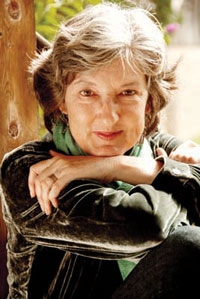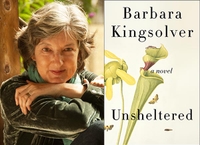Animal, Vegetable, Miracle: A Year of Food Life
Barbara Kingsolver, Camille Kingsolver, Steven L. Hopp, , with Steven L. Hopp and Camille Kingsolver. . HarperCollins, $26.95 (384pp) ISBN 978-0-06-085255-9
Reviewed by
Michael Pollan is the crack investigator and graceful narrator of the ecology of local food and the toxic logic of industrial agriculture. Now he has a peer. Novelist Kingsolver recounts a year spent eating home-grown food and, if not that, local. Accomplished gardeners, the Kingsolver clan grow a large garden in southern Appalachia and spend summers "putting food by," as the classic kitchen title goes. They make pickles, chutney and mozzarella; they jar tomatoes, braid garlic and stuff turkey sausage. Nine-year-old Lily runs a heritage poultry business, selling eggs and meat. What they don't raise (lamb, beef, apples) comes from local farms. Come winter, they feast on root crops and canned goods, menus slouching toward asparagus. Along the way, the Kingsolver family, having given up industrial meat years before, abandons its vegetarian ways and discovers the pleasures of conscientious carnivory.
This field—local food and sustainable agriculture—is crowded with books in increasingly predictable flavors: the earnest manual, diary of an epicure, the environmental battle cry, the accidental gardener.
Kingsolver has the ear of a journalist and the accuracy of a naturalist. She makes short, neat work of complex topics: what's risky about the vegan diet, why animals belong on ecologically sound farms, why bitterness in lettuce is good. Kingsolver's clue to help greenhorns remember what's in season is the best I've seen. You trace the harvest by botanical development, from buds to fruits to roots.
Kingsolver is not the first to note our national "eating disorder" and the injuries industrial agriculture wreaks, yet this practical vision of how we might eat instead is as fresh as just-picked sweet corn. The narrative is peppered with useful sidebars on industrial agriculture and ecology (by husband Steven Hopp) and recipes (by daughter Camille), as if to show that local food—in the growing, buying, cooking, eating and the telling—demands teamwork.
Reviewed on: 03/26/2007
Genre: Nonfiction
Analog Audio Cassette - 978-1-4332-0730-3
Compact Disc - 12 pages - 978-0-06-085357-0
Downloadable Audio - 978-1-4332-4102-4
Other - 400 pages - 978-0-06-179583-1
Paperback - 402 pages - 978-0-06-085256-6
Pre-Recorded Audio Player - 978-1-4332-5584-7



